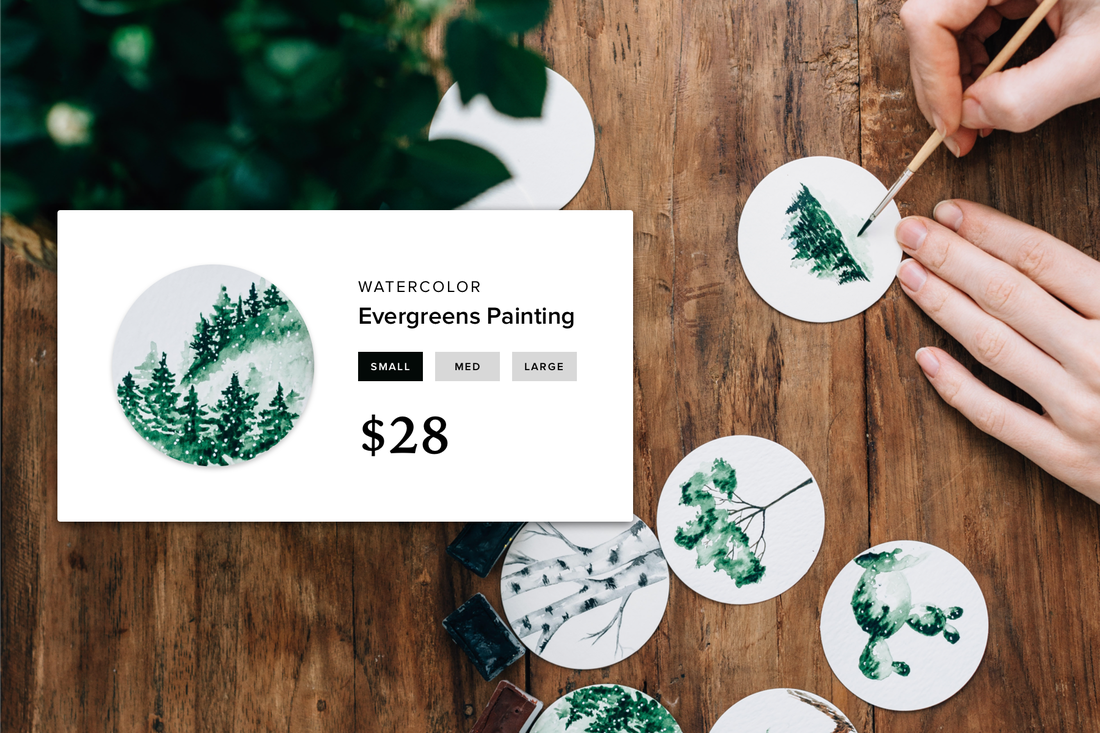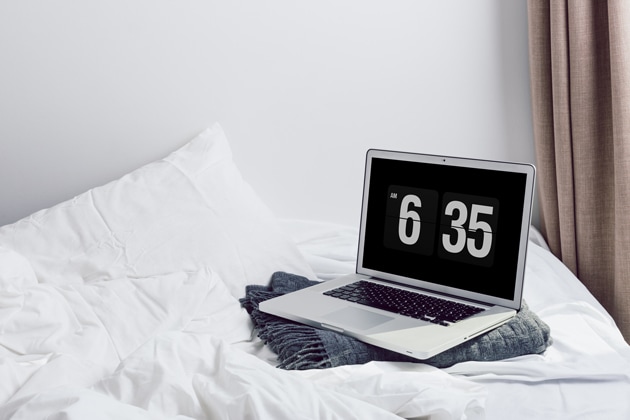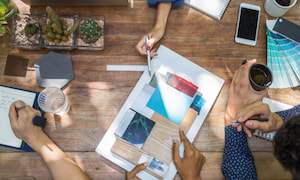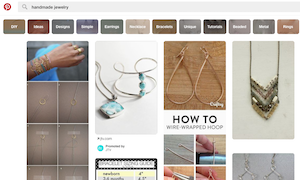Being a solopreneur or small business owner isn't easy...or cheap. While you could hire a professional for your product photography, it may be more cost effective to start with some simple shots on your own. Here are a few tips for getting a good photo using just your phone and some simple product staging ideas.
1. Invest in a Few Accessories
When it comes to taking photos with your smartphone, you don't need a huge collection of gadgets to add to your device. You just need to build a photography kit with a few accessories to help maximize your budget and time.
- Backdrop: A white or light colored backdrop will help your images look clean and consistent. An inexpensive bed sheet works nicely and is large enough that you can drape it over a table or chair to cover all the room around the image. You might want to buy two to start—one to place under the item and another to use behind it.
- Table: A small prop table (think something that is larger than your product) can help add dimension to images and make it easier to place your product.
- Light: While natural light is often the best and most inexpensive option, you will find that better lighting is often necessary. A large lamp with a soft white bulb—consider a clip-on option for flexibility—is a good starter item.
- Tripod: One of the biggest mistakes that amateur photographers make is capturing shaky or out of focus images. No matter how steady you think your hand is, photos will always look better when using a tripod.
2. Select an Ideal Location
You've heard that location is everything. The same is true for images. How do you want people to perceive your product? They will associate it with the location.
This is a bit less of a concern if you are taking photos using a backdrop as recommended above. But many products can look great in natural environments. If you plan to use a more natural setting, it is important to ensure that the background of the image is not cluttered, dirty or distracting. A good example here is of staging a product outdoors—the grass should be nice and green and the sky should be bright blue; anything else will detract from the image.
Make sure the context of the location is right for your product. (You would not take pictures of a baby product in a nightclub.)
Create focus so that the image is nice to look at, but make sure all of the focus is on the item you are selling. You can do this with a blurred background or other editing effects.
This is a bit less of a concern if you are taking photos using a backdrop as recommended above. But many products can look great in natural environments. If you plan to use a more natural setting, it is important to ensure that the background of the image is not cluttered, dirty or distracting. A good example here is of staging a product outdoors—the grass should be nice and green and the sky should be bright blue; anything else will detract from the image.
Make sure the context of the location is right for your product. (You would not take pictures of a baby product in a nightclub.)
Create focus so that the image is nice to look at, but make sure all of the focus is on the item you are selling. You can do this with a blurred background or other editing effects.
3. Perfect Lighting
There are three kinds of light to think about when taking photographs—natural, artificial and ambient.
The best lighting is almost always natural. But it can be the least predictable. Natural light is cast by the sun and photos can be taken indoors or outside.
Artificial light occurs when you use a light source of any kind. Too much artificial light can cause photos to have a red or orange tinge.
Ambient light is a mix of artificial and natural light. This is the most common type of light and what you will probably use most frequently.
The best lighting is almost always natural. But it can be the least predictable. Natural light is cast by the sun and photos can be taken indoors or outside.
Artificial light occurs when you use a light source of any kind. Too much artificial light can cause photos to have a red or orange tinge.
Ambient light is a mix of artificial and natural light. This is the most common type of light and what you will probably use most frequently.
4. Take a Lot of Pictures
Unlike the days of film where taking photos could get expensive, digital photography is cheap. Take lots of different photos. Take them at every angle.
- Low angle: Provides a somewhat skewed orientation when the camera is held below the item
- Front angle: Direct, head-on view of the product (most common angle)
- High angle: A bird's eye view of the product from above (best for more flat items)
5. Go Minimal
Don't try to overdo or overthink it. Stick to simple, sharp images when you are taking product pictures on your own. Browse through a few other websites to find a style that you like and set up your products in a way that is similar. (There's a reason products on a white or light background are popular—it is easy and effective.)
Keep the staging simple and you won't have to worry about clutter in images or potential customers confusing your products with background elements.
When you get a photo you love, make a sketch or take notes. How did you do it? This will help dramatically when you try to recreate the setup later.
Keep the staging simple and you won't have to worry about clutter in images or potential customers confusing your products with background elements.
When you get a photo you love, make a sketch or take notes. How did you do it? This will help dramatically when you try to recreate the setup later.
Conclusion
Taking great photos means taking the time to experiment and develop a style for your brand's product images. Do you like the product on white concept or do you prefer a natural environment?
Once you've captured your ideal image, don't reinvent the wheel for every new item in your inventory. Repeat the same photo setup with every item. It will create consistency in the design for your website and printed materials, but it will also help make the photo process more natural and efficient for you. Good luck!
Once you've captured your ideal image, don't reinvent the wheel for every new item in your inventory. Repeat the same photo setup with every item. It will create consistency in the design for your website and printed materials, but it will also help make the photo process more natural and efficient for you. Good luck!
 Carrie Cousins Carrie is a designer and content marketer. She works promoting the Roanoke Region of Virginia and has more than 10 years of media and marketing experience.
Carrie Cousins Carrie is a designer and content marketer. She works promoting the Roanoke Region of Virginia and has more than 10 years of media and marketing experience.







